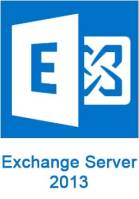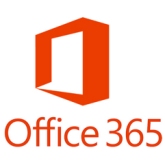Exchange Server 2007 Interview Questions and Answers
Exchange Server 2007 Interview Questions and Answers :–
Installation and Co- existence
This part of Exchange Server 2007 includes the interview Questions and Answers on Exchange Server 2007 Installation and Co – existence options introduced in Exchange Server 2007.
If you want know more on Exchange Server 2007 Interview question and Answers, please follow the Questions and Answers posted by me..
please, Leave your comments on this….
1. What are the pre requisites to install Exchange Server 2007?
- Microsoft .Net Framework 2.0
- Microsoft ASP .Net
- World Wide Web Service
- MMC 3.0
- Windows power shell
- SMTP & NNTP service should not be installed
2. What’s the order to install Exchange Server 2007 Roles in a exchange Server 2003 organization?
- Client Access Server Role
- Hub Transport Server Role
- Mailbox Server Role
- Unified Messaging Server role
3. What are the versions available in Exchange Server 2007?
There are two types of Exchange Server 2007 version release
- · 64 bit – for production environment
- · 32 bit – only for non-production environment
4. What are the Operating system requirements to install Exchange Server 2007?
Exchange Server 2007 can be installed on
- · Windows Server 2003 SP2 64-bit,
- · Windows Server 2003 R2 SP2 64-bit or
- · Windows Server 2008 64-bit
5. What are the Active directory requirements to install Exchange Server 2007?
- Domain functional level at least windows server 2000 native or higher
- Schema Master must be run on windows 2003 server with sp1
- At least one Domain Controller, in each domain with windows server 2003 sp1
- At least one global catalog server in Active Directory Site which hosts exchange Server 2007
- 4:1 ratio of Exchange processor to global catalog server processors
6. What are the hardware requirements to install Exchange Server 2007?
- Processor – 64 bit processor
- RAM – 2 GB + 5 MB per Mailbox
- Disk Space – At least 1.2 GB on the drive on which you install Exchange
- – 200 MB of available disk space on the system drive
- File Format – NTFS
7. What are the Software requirements to install Exchange Server 2007?
Following are the software prerequisites to install Exchange Server 2007
- Microsoft .Net Framework 2.0
- IIS
- WWW
- MMC 3.0
- Microsoft Windows Power Shell
8. What is Transition in Exchange Server 2007?
Transition is the scenario in which you upgrade an existing Exchange organization to Microsoft Exchange Server 2007. To perform the transition, you must move data from the existing Exchange servers to new Exchange 2007 servers. For example, when upgrading from an Exchange Server 2003 or Exchange 2000 Server organization to an Exchange 2007 organization, you perform a transition
When transitioning to Exchange 2007, you cannot perform an in-place server upgrade on an existing Exchange server. Instead, you must install a new Exchange 2007 server into the existing organization, and then move data to the new Exchange 2007 server.
9. What is Migration in Exchange Server 2007?
Migration is the scenario in which you upgrade to Exchange 2007 by migrating data from a non-Exchange messaging system to Exchange 2007 or from an existing Exchange organization to a completely new Exchange organization, without retaining any of the Exchange configuration data in the first organization. For example, when merging with another company, you can perform a migration. In this scenario, you move mailboxes and data to the other company’s Exchange organization, without retaining any of the configuration data from your existing Exchange organization. Another example is when upgrading from Lotus Notes to Exchange 2007, you perform a migration. In this scenario, you must move mailboxes and data to the new Exchange 2007 organization, without retaining any of the data from the Lotus Notes organization.
The migration process includes installing a completely new Exchange 2007 organization, and then migrating mailboxes from the old messaging system to the new Exchange 2007 messaging system, using various tools for migration.
10. Is it possible to do in place upgrade from Exchange Server 2003 to Exchange Server 2007?
No in-place upgrade on existing Exchange server organization. Install new Exchange Server 2007 server into existing organization, and move data to new server.
11. What are the transition options available in Exchange Server 2007
We can make transition in following options
Single forest to single forest – you have an existing single forest Exchange 2003 or Exchange 2000 topology, you can transition to a single forest Exchange 2007 organization
Single forest to cross forest – If you have an existing single forest Exchange 2003 or Exchange 2000 topology, you can transition to a cross-forest Exchange 2007 topology
Cross forest to cross forest – If you have an existing cross-forest Exchange 2003 or Exchange 2000 topology with Exchange servers and mailboxes in each forest, you can transition to an Exchange 2007 cross-forest topology.
Resource forest to resource forest –
Single forest to resource forest –
12. What are the considerations for Exchange Server 2007 to co exists with Exchange server 2000 and Exchange Server 2003?
- Exchange Organization in Exchange Native Mode· Exchange Server 2007 routing group (DWBGZMFD01QNBJR) is created only for coexisting with earlier versions of Exchange.
- Routing Group Connector is required between Exchange Server 2003 and Exchange Server 2007 (created during setup).
- Exchange Server 2003 computers cannot interoperate with the Unified Messaging server role. Exchange 2003 mailboxes cannot be Unified Messaging–enabled.
- Exchange 2003 Front-ends cannot talk to Exchange Server 2007 Mailbox Server Roles.
- No in-place upgrade on existing Exchange server. Install new Exchange Server 2007 server into existing organization, and move data to new server
13. Will Front End server talk to Exchange Server 2007 Mailbox server in an Exchange organization having both exchange 2003 and exchange Server 2007?
Exchange Server 2003 Front-end server cannot talk to Exchange Server 2007 Mailbox Server Roles
14. What is the status of routing group connector in co existed of Exchange Server 2003 and 2007?
Exchange Organization in Exchange Native Mode· Exchange Server 2007 routing group (DWBGZMFD01QNBJR) is created only for coexisting with earlier versions of Exchange.
Routing Group Connector is required between Exchange Server 2003 and Exchange Server 2007 (created during setup).
15. Which service should not be installed in Exchange Server 2007 installation?
SMTP and NNTP service should not be installed
16. What are the Exchange Server editions available?
There are two types of Exchange Server 2007 editions available
- Standard Edition
- Enterprise Edition
17. What is the difference between standard and Enterprise Edition?
| Exchange 2007 functions | Standard Edition | Enterprise Edition |
| Number of Data Stores Supported | 5 includes Mailbox/Public Folder | 50 combination of both |
| Clustering support | No | Yes |
| OS Support | Windows 2003 64 bit | Windows 2003 64 bit |
18. What to do if exchange Server 5.5 in your organization in order to upgrade to Exchange Server 2007?
You cannot upgrade an existing Microsoft Exchange Server version 5.5 organization to Exchange Server 2007. You must first migrate from the Exchange Server 5.5 organization to an Exchange Server 2003 or an Exchange 2000 Server organization. Then you can transition the Exchange 2003 or Exchange 2000 organization to Exchange 2007.
19. What are the Planning considerations for Client Access Server Role?
The Client Access server role supports the Outlook Web Access, Outlook Anywhere, and Exchange ActiveSync client applications, in addition to the POP3 and IMAP4 protocols. The Client Access server role also hosts several key services, such as the Auto discover service and Exchange Web Services.
In order to have better client access functionality we have to perform a Planning consideration on Exchange Active Sync. Outlook web Access, outlook anywhere, POP3 and IMAP4 protocols and also securing client access
20. What are the Planning Considerations of Hub Transport Server Role?
Hub Transport server role is a required role in a Microsoft Exchange Server 2007 organization that provides routing within a single organizational network by using the Active Directory directory service site. Hub Transport server role installed handles all mail flow inside the organization, apply transport rules, apply journal rules, and deliver messages to recipients’ mailboxes
We have to perform a Planning Consideration on
- Topology for mail flow inside and outside the Exchange organization
- Server capacity – determine how to perform performance monitor
- Security – includes delegation of administrative roles and verification that IP connections are only enabled from authorized servers
- Transport Features – determine the transport features that you will enable at the Hub Transport server and how they will be configured
21. What are the Planning Considerations of Mailbox Server Role?
The Microsoft Exchange Server 2007 Mailbox server role hosts mailbox databases and provides e-mail storage and advanced scheduling services for Microsoft Office Outlook users The Mailbox server role can also host a public folder database, which provides a foundation for workflow, document sharing, and other forms of collaboration
We have to perform a planning consideration on
- Sizing the database,
- Planning for public folder,
- Co hosting with other server roles and
- Planning for clustered Mailbox server
22. What are the Planning Considerations for Edge Transport Server Role?
Exchange Server 2007 Edge Transport server role is designed to provide improved antivirus and anti-spam protection for the Exchange organization. Computers that have the Edge Transport server role also apply policies to messages in transport between organizations. The Edge Transport server role is deployed in an organization’s perimeter network.
- Edge Transport Should not be included in Active Directory
- Should be installed in a Standalone Server
- Edge Transport Should not be Part of the domain
- ADAM Should be Installed
- Pre requisites .Net framework , Windows Management Shell, MMC 3.0











Ajay said
Thank you
umesh g said
Information was 2 good , thank u
Bt plz c if u can provide sum more
It will b agreat help
Thanks a lot . .
Priyan Thusitha Rathnayake said
Thank you ..
Bush said
Thank you and provide us lot of questions with answers
Sagar said
thanks much for your hard work appreciated your help.
Manoj Kumar Barik said
Nice…..
Pratap Singh Negi said
hi ..viral ji I am new beginner in exchnage server domain and trying to experties in messaging for future , kindly suggest which exchnage server module is for better understanding so that can stand my self on current senario of MS exchnage…as I am belong from MS windows server and HP-ux….kindly suggest so that I can prepare itself.